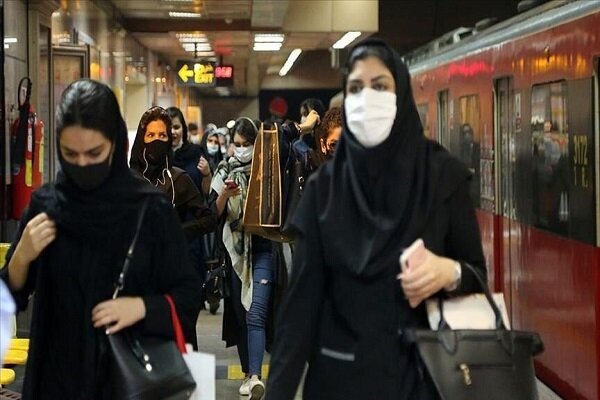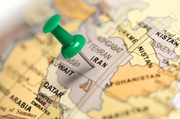The coronavirus control in the country, especially in the cities where restrictions were imposed, is improving, Namaki noted.
Although it was predicted that this [Iranian calendar] month (November 21-December 20), mortality will reach 800 to 1,000 per day, fortunately, it is facing a downward trend falling below 400, which is a great and honorable achievement, he emphasized.
However, for the quarantine of patients who are financially struggling, over 40,000 beds in hotels, and guesthouses are needed, he stated.
Lockdown moves cities out of “red” zone
Strict COVID-19 restrictions which took effect on October 26 have caused 87 out of 89 infected cities to get out of the high-risk “red” zone.
The National Headquarters for Coronavirus Control started strict restrictions in 43 cities that had the highest rate of infection in the country. Ten days later, decisions were made to set new limitations on highly-affected areas for another 10 days, through which 46 cities undergone restrictions.
The plan divided cities into three levels of alert, namely red, orange, and yellow.
All of the cities, except for two, are now out of the red condition and have turned orange or yellow so that the hospitalization rate has decreased, said Alireza Raeisi, the National Headquarters for Coronavirus Control spokesman, expressing hope that the death toll will also drop within two to three weeks.
In some 160 cities and towns that were on the highest alert, the disease prevalence has begun to decrease in about 145 cities. And the remaining 15 cities will also experience a downward trend this week, he explained.
Due to the high prevalence of the disease, a plan also went into effect on November 21, according to which all occupations, except for emergency services and basic food suppliers, get closed for two weeks in high-risk cities.
Hotels ready to accommodate coronavirus patients
In the health system, there are two sections of hoteling and treatment; so that hotels, if being well equipped in terms of medical needs and instruments, can also house both patients and health care staff.
Cultural Heritage, Tourism, and Handicrafts Minister Ali-Asghar Mounesan announced in November that his ministry is ready to help turn certain hotels into shelters for coronavirus patients based on a plan proposed by the health ministry.
The hotel space allows patients to recover from the virus and self-isolate appropriately, minimizing the risk of transmission to others without compromising the quality of patient care.
Mostafa Ghane'ei, an official with the Vice Presidency for Science and Technology, said that the domestically produced COVID-19 vaccine will probably be injected into the whole population in the [next Iranian calendar year] month of Mehr (starting September 23, 2021).
All vaccines are in the pre-clinical stage and it is hoped that at least 4 vaccines to start phase 3 of the human trial in September 2021, he highlighted.
Iraj Harirchi, the deputy minister of health, has said that in Iran, 12 groups are making efforts to develop coronavirus vaccine, three of which have passed the animal testing.
Two weeks ago, Namaki expressed hope that the country will introduce the home-grown COVID-19 vaccine by the end of the current Iranian calendar year (March 19, 2021).
COVID-19 new cases, death toll
In a press briefing on Sunday, Health Ministry spokesperson Sima-Sadat Lari confirmed 12,950 new cases of COVID-19 infection, raising the total number of infections to 948,749. She added that 658,292 patients have so far recovered, but 5,859 still remain in critical conditions of the disease.
During the past 24 hours, 389 patients have lost their lives, bringing the total number of deaths to 47,874, she added.
Lari noted that so far 6,081,952 COVID-19 tests have been conducted across the country.
She said the high-risk “red” zones include provinces of Tehran, Isfahan, Qom, East Azarbaijan, South Khorasan, Semnan, Qazvin, Lorestan, Ardebil, Khuzestan, Kermanshah, Kohgiluyeh-Boyerahmad, Gilan, Bushehr, Zanjan, Ilam, Khorasan Razavi, Mazandaran, Chaharmahal-Bakhtiari, Alborz, West Azarbaijan, Markazi, Kerman, North Khorasan, Hamedan, Yazd, and Kordestan.
The provinces of Hormozgan, Fars, Golestan and Sistan-Baluchestan are also on alert.
First Time Published in Tehran Times.



























Your Comment